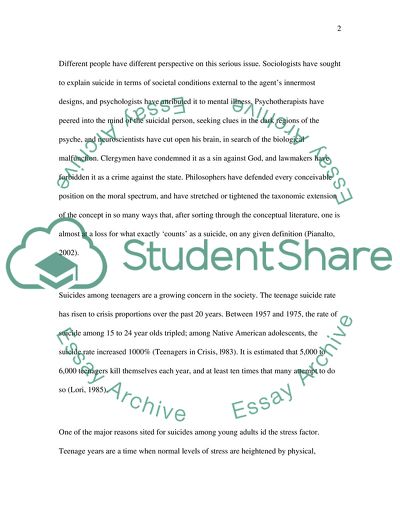Cite this document
(Affects of Adolescent Suicide on Adolescent Social Groups: A Symbolic Research Proposal, n.d.)
Affects of Adolescent Suicide on Adolescent Social Groups: A Symbolic Research Proposal. https://studentshare.org/sociology/1703613-affects-of-adolescent-suicide-on-adolescent-social-groups-a-symbolic-interactionist-approach
Affects of Adolescent Suicide on Adolescent Social Groups: A Symbolic Research Proposal. https://studentshare.org/sociology/1703613-affects-of-adolescent-suicide-on-adolescent-social-groups-a-symbolic-interactionist-approach
(Affects of Adolescent Suicide on Adolescent Social Groups: A Symbolic Research Proposal)
Affects of Adolescent Suicide on Adolescent Social Groups: A Symbolic Research Proposal. https://studentshare.org/sociology/1703613-affects-of-adolescent-suicide-on-adolescent-social-groups-a-symbolic-interactionist-approach.
Affects of Adolescent Suicide on Adolescent Social Groups: A Symbolic Research Proposal. https://studentshare.org/sociology/1703613-affects-of-adolescent-suicide-on-adolescent-social-groups-a-symbolic-interactionist-approach.
“Affects of Adolescent Suicide on Adolescent Social Groups: A Symbolic Research Proposal”. https://studentshare.org/sociology/1703613-affects-of-adolescent-suicide-on-adolescent-social-groups-a-symbolic-interactionist-approach.


